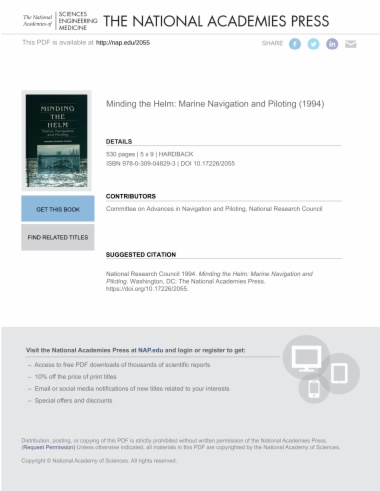

Large ships transporting hazardous cargoes, notorious marine accidents, and damage to marine ecosystems from tanker spills have heightened public concern for the safe navigation of ships.
This new volume offers a complete, highly readable assessment of marine navigation and piloting. It addresses the application of new technology to reduce the probability of accidents, controversies over the effectiveness of waterways management and marine pilotage, and navigational decisionmaking. The book also explores the way pilots of ships and tugs are trained, licensed, and held accountable.
Minding the Helm approaches navigational safety from the perspectives of risk assessment and the integration of human, technological, and organizational systems. Air and marine traffic regulation methods are compared, including the use of vessel traffic services.
With a store of current information and examples, this document will be indispensable to federal and state pilotage and licensing authorities and marine traffic regulators, the Coast Guard, pilot associations, and the shipping and towing industries. It will also interest individuals involved in waterway design, marine education, and the marine environment.